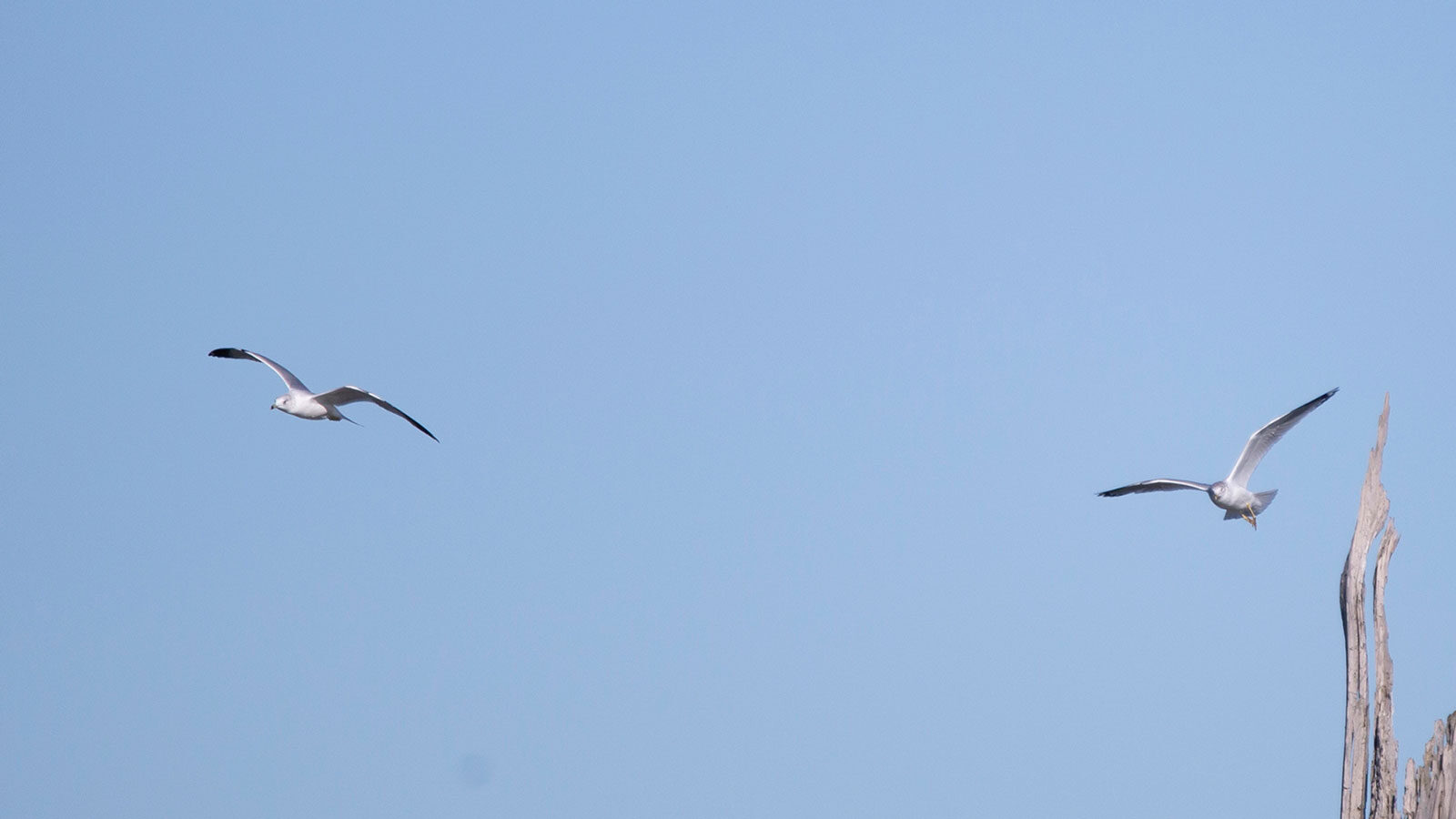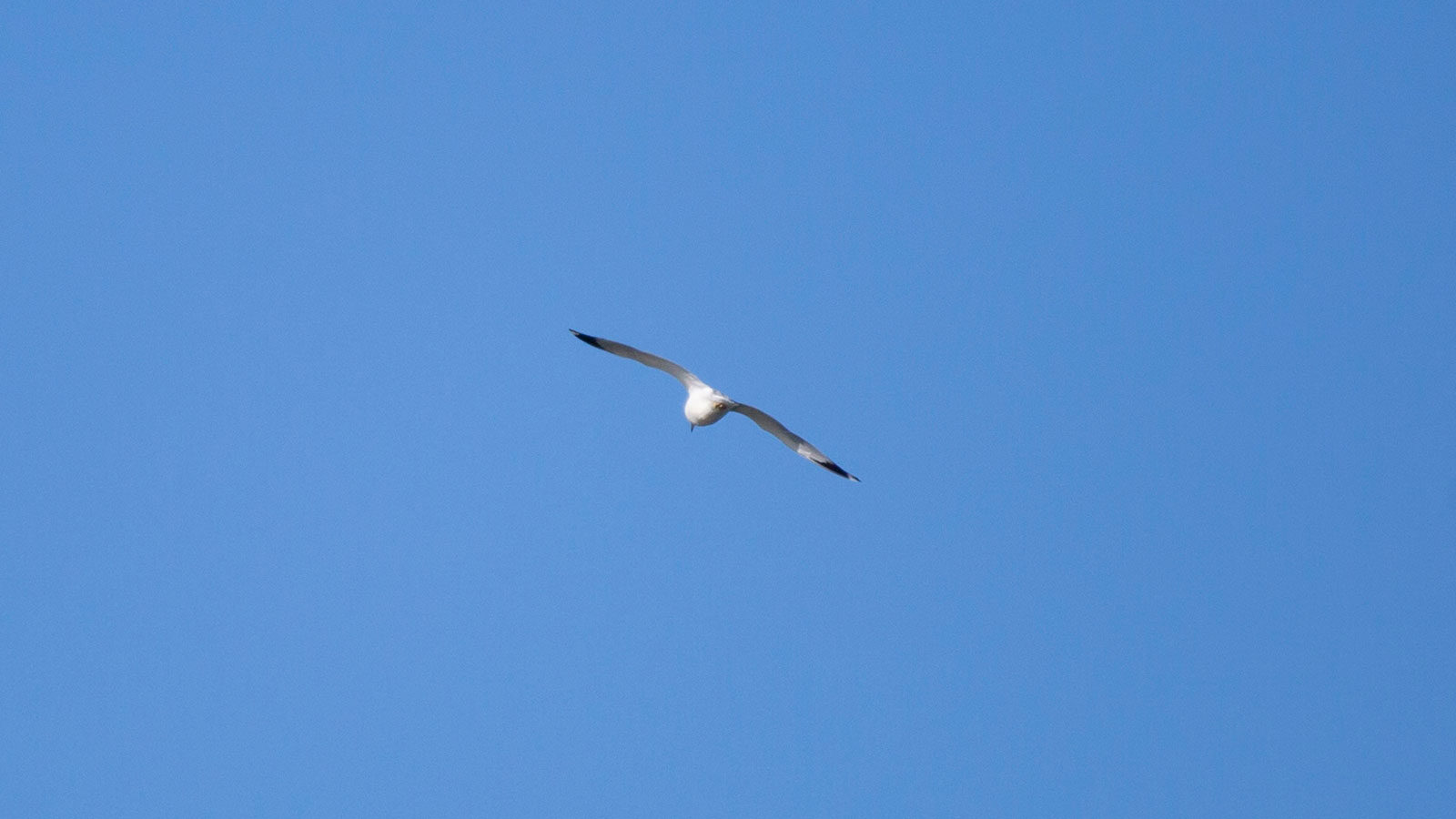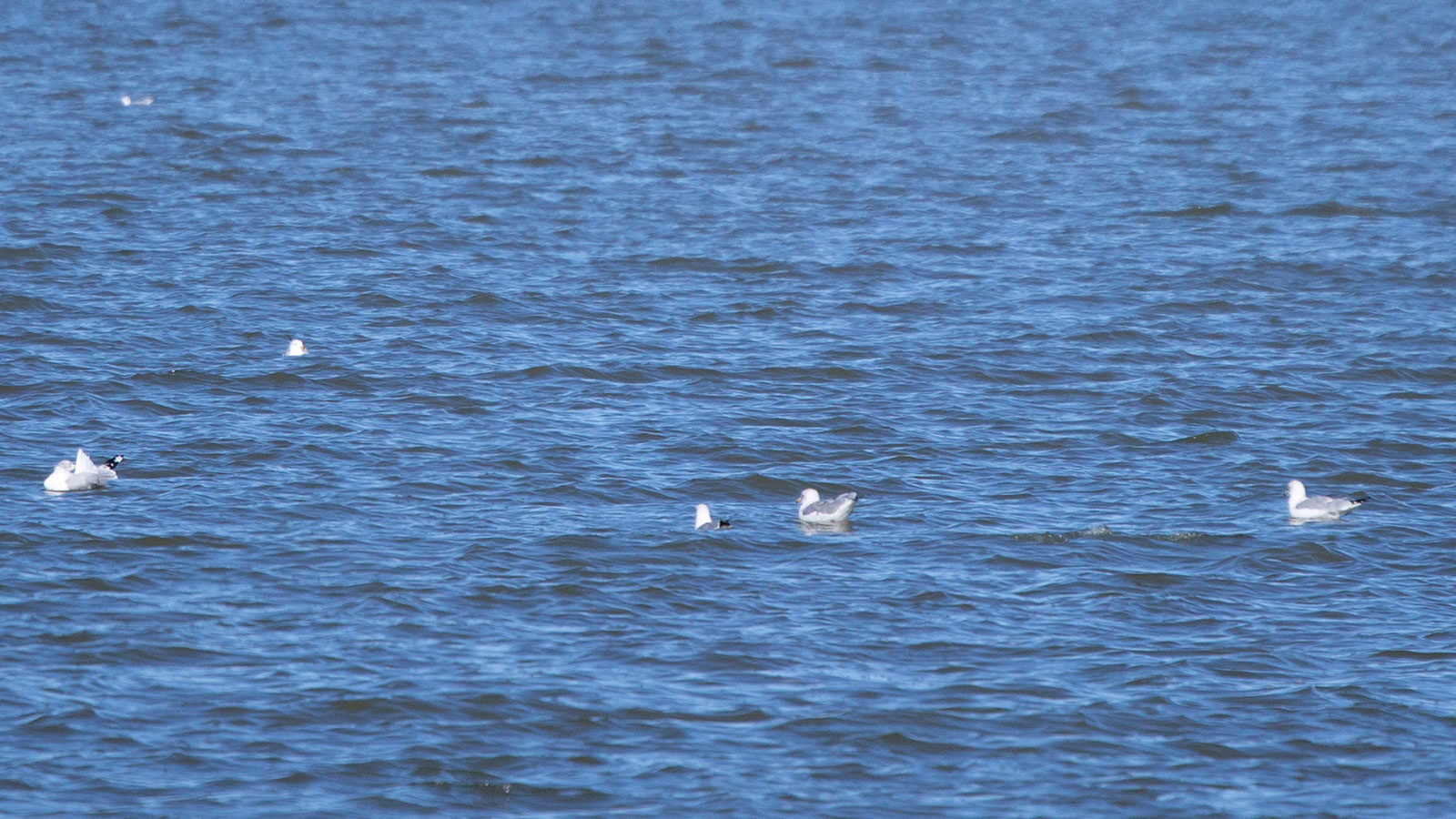
Did you know that ring-billed gulls nest together in colonies of thousands?
Ring-Billed Gulls
at
a Glance
Key Features:
Ring-billed gulls are white birds with gray backs, black ring around their beaks, and black and yellow feathers on the end of their tails.
Least Concern - Population Increasing
Habitat:
Lakes, landfills, parking lots, ponds, reservoirs, and streams
nesting habits:
Ring-billed gulls build nests on the ground out of grass, leaves, lichen, sticks, and twigs.
seasons ring-billed gulls are active in our area:
Winter
Diet:
Earthworms, fish, garbage, grain, insects, and rodents
hunting Behavior:
Ring-billed gulls forage on the ground, in water, and in the air. They also steal from other birds.
Commonly Confused With:
Herring Gulls

Ring-billed gulls are often confused with herring gulls because both are white birds with gray backs.

Ring-billed gulls are smaller and have black rings around their beaks.
